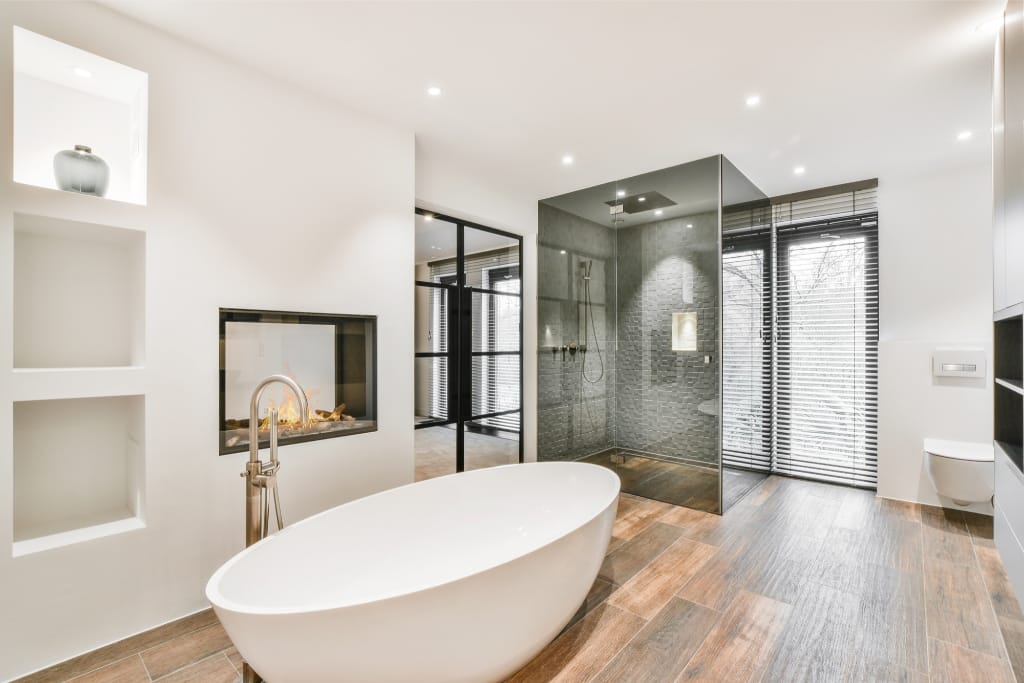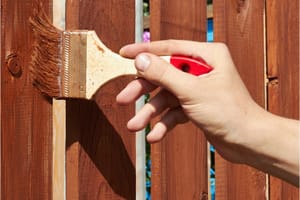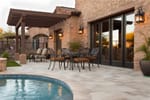Your bathroom should be a sanctuary where you start and end each day feeling refreshed.
But when was the last time you truly evaluated this essential space?
Many homeowners live with outdated, dysfunctional bathrooms simply because they're unsure when renovation becomes necessary.
A bathroom remodel represents one of the most valuable home improvements you can make, typically returning 60-70% of your investment while dramatically improving your daily quality of life.
However, timing this significant undertaking requires careful consideration of both functional and aesthetic factors.
Whether you're dealing with persistent maintenance issues or simply craving a more modern aesthetic, recognizing the right moment to renovate can save you money, time, and frustration.
The following signs indicate your bathroom has moved beyond simple repairs into remodel territory.
1)) Persistent Water Damage And Moisture Issues
Water damage in bathrooms often starts small but can quickly escalate into expensive structural problems.
If you notice water stains on walls or ceilings, peeling paint, or soft spots in flooring, these symptoms suggest underlying moisture penetration that cosmetic fixes won't resolve.
Chronic moisture problems frequently stem from inadequate ventilation, failing waterproofing, or outdated plumbing connections.
While you might initially address surface issues with fresh paint or caulk, recurring problems indicate the need for a comprehensive renovation that addresses root causes.
Mold and mildew growth, particularly in areas that should remain dry, signals serious moisture control failures.
Professional remediation combined with proper bathroom remodeling ensures these health hazards don't return.
2)) Outdated Plumbing That Frequently Fails
Aging plumbing systems cause more than inconvenience—they create ongoing maintenance headaches and potential water damage.
If your bathroom requires frequent plumber visits for clogs, leaks, or pressure problems, the underlying infrastructure likely needs replacement.
Low water pressure, inconsistent temperature control, and slow drainage often indicate corroded pipes or inadequate system capacity.
While individual repairs might provide temporary relief, systematic failures suggest comprehensive plumbing updates are necessary.
Galvanized steel pipes, common in homes built before 1960, deteriorate from the inside out.
If your bathroom still uses these materials, replacement during remodeling prevents future catastrophic failures.
3)) Insufficient Storage And Poor Layout
Bathroom storage needs evolve, but poor original design can create permanent functionality problems.
If counter space feels cramped, toiletries lack proper storage, or daily routines feel cramped and inefficient, layout improvements through remodeling can dramatically enhance usability.
Small bathrooms particularly benefit from strategic remodeling that maximizes every square foot.
Modern storage solutions, including built-in niches, floating vanities, and tall cabinets, can transform cluttered spaces into organized retreats.
Consider whether your current bathroom layout supports your household's needs.
Multiple people sharing one bathroom might benefit from double vanities or improved traffic flow that remodeling can provide.
4)) Cracked Or Damaged Tiles And Surfaces
Surface damage in bathrooms goes beyond aesthetics—it creates opportunities for water penetration and bacterial growth.
Cracked tiles, especially in shower areas, allow moisture to reach substrate materials where it can cause rot and mold.
Grout deterioration, while seemingly minor, compromises your bathroom's waterproofing integrity.
When grout cleaning and resealing no longer restore appearance or function, tile replacement becomes necessary.
Damaged countertops, particularly those with chips or cracks, harbor bacteria and resist thorough cleaning.
Natural stone surfaces may require sealing maintenance, but severe damage necessitates replacement during remodeling.
5)) Poor Lighting And Ventilation
Inadequate lighting makes daily grooming tasks difficult and can make even spacious bathrooms feel cramped and uninviting.
If your bathroom relies solely on overhead lighting or lacks sufficient illumination around mirrors, a remodel can introduce layered lighting that improves both function and ambiance.
Ventilation problems contribute to moisture damage, mold growth, and poor air quality.
If your bathroom lacks an exhaust fan, has an underpowered fan, or relies on windows for ventilation, upgrading during remodeling protects your investment and health.
Modern bathroom ventilation systems can include humidity sensors, timer controls, and quiet operation that older systems lack.
These improvements provide long-term benefits that justify remodeling investment.
6)) Accessibility Concerns
Bathroom accessibility becomes increasingly important as household members age or face mobility challenges.
High tub edges, narrow doorways, and a lack of grab bars can make bathroom use dangerous or impossible for some family members.
Universal design principles incorporated during remodeling create spaces that work for users of all abilities.
Walk-in showers, comfort-height toilets, and wider doorways improve accessibility without sacrificing style.
Even if current accessibility isn't a concern, forward-thinking remodeling can increase your home's long-term value and usability.
These improvements often prove wise investments as needs change over time.
7)) Fixtures That No Longer Function Properly
When bathroom fixtures require frequent repairs or fail to perform basic functions reliably, replacement becomes more economical than continued maintenance.
Toilets that run constantly, faucets that drip persistently, or showers with temperature control problems indicate fixture failure.
Older fixtures may lack water-efficient features that modern alternatives provide.
Low-flow toilets, water-saving showerheads, and efficient faucets reduce utility costs while improving performance.
Fixture replacement during comprehensive remodeling ensures proper installation, coordination with updated plumbing, and cohesive design that individual replacements can't achieve.
8)) Persistent Odors You Can't Eliminate
Bathroom odors that resist thorough cleaning often indicate problems hidden within walls, floors, or fixtures.
Sewer gas smells might suggest drainage problems, while musty odors typically indicate hidden moisture and mold growth.
Surface cleaning can't address odor sources within wall cavities or beneath flooring.
Comprehensive remodeling allows investigation and remediation of these hidden problems while installing new materials that won't harbor odors.
Persistent odors can also stem from inadequate ventilation or outdated materials that absorb and retain smells.
Modern materials and improved ventilation systems installed during remodeling eliminate these ongoing problems.
9)) Safety Hazards And Code Violations
Older bathrooms may not meet current safety codes, creating liability and insurance concerns.
Electrical outlets without GFCI protection, inadequate lighting, or structural deficiencies pose real dangers that remodeling can address.
Slippery surfaces, inadequate grab bars, and poor lighting create fall hazards, particularly for older adults.
Safety improvements during remodeling can prevent accidents and provide peace of mind.
Professional remodeling ensures all work meets current building codes and safety standards.
This compliance protects your family and maintains your home's insurability and resale value.
10)) Declining Property Value Impact
A severely outdated bathroom can significantly impact your home's market value and appeal to potential buyers.
If your bathroom feels decades behind current design trends or lacks modern conveniences, it may drag down your entire property's perceived value.
Real estate professionals consistently identify bathrooms as key selling points that influence buyer decisions.
Even if you're not planning to sell immediately, maintaining competitive bathrooms protects your investment.
Modern buyers expect certain amenities and design standards that older bathrooms may lack.
Remodeling brings your space up to contemporary expectations while adding tangible value to your property.
Conclusion
Bathroom remodeling represents a significant investment, but recognizing these warning signs helps you time your project appropriately.
Rather than continuing expensive repairs on failing systems, comprehensive renovation addresses multiple issues simultaneously while creating the bathroom you want.
Professional contractors can assess your specific situation and recommend solutions that address both immediate problems and long-term goals.
Quality remodeling done right the first time provides decades of reliable service and enjoyment.
Start by prioritizing your most pressing issues, then consider how comprehensive remodeling might address multiple concerns efficiently.
With proper planning and execution, your bathroom remodel can transform daily routines while protecting your home's value and safety.
Download Our Free E-book!








